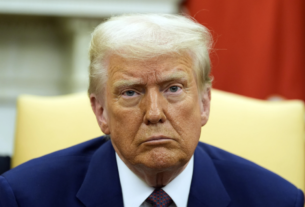India prepares tariff reductions in key sectors ahead of Prime Minister Narendra Modi’s meeting with U.S. President Donald Trump. The move aims to improve trade ties and avoid potential U.S. tariff actions.
“India’s high tariffs limit American exports,” a senior Trump adviser said. U.S. officials push for lower duties on agricultural and industrial goods.
Indian officials confirm plans to cut tariffs in at least a dozen sectors. The changes could benefit U.S. exporters of almonds, apples, medical devices, and technology products.
Trade talks will focus on reducing barriers for American goods. The U.S. seeks better market access, while India wants relief from restrictions on steel and pharmaceuticals.
Trump previously criticized India’s trade policies, calling them unfair. His administration removed India’s preferential trade status under the Generalized System of Preferences (GSP).
Modi’s visit offers a chance to reset trade relations. Indian officials hope to secure a “mini deal” that restores some trade benefits.
“Both sides see value in easing trade tensions,” an Indian trade official said. Negotiators work on a framework for mutual tariff reductions.
India’s high import duties on U.S. products remain a major concern. Trump’s team argues that lowering these tariffs will increase American exports.
Indian industries also seek better terms in U.S. markets. Sectors like IT, textiles, and pharmaceuticals push for reduced barriers.
A successful deal could prevent new U.S. tariffs on Indian goods. Trump previously threatened action over what he sees as unfair trade practices.
Economic cooperation plays a key role in U.S.-India relations. Defense, technology, and energy agreements continue alongside trade talks.
Modi’s government positions India as a global manufacturing hub. Lower tariffs could attract more American investment in key industries.
“Trade deals must benefit both countries,” a business leader said. Balanced agreements help industries on both sides grow.
India remains open to deeper trade discussions beyond tariff cuts. Long-term goals include stronger economic ties with the U.S.
The upcoming meeting will determine the future of bilateral trade. Business leaders and policymakers watch for final agreements on tariffs.
Both governments emphasize the importance of stable trade relations. Avoiding tariff disputes strengthens economic and diplomatic ties.
Trump and Modi previously built a strong personal relationship. The leaders focus on trade as a key pillar of U.S.-India cooperation.
Any agreement will impact multiple industries in both countries. Companies prepare for potential changes in trade policies.
Trade negotiations continue as both sides seek a deal. The outcome of Modi’s visit could shape future economic relations between the U.S. and India.




